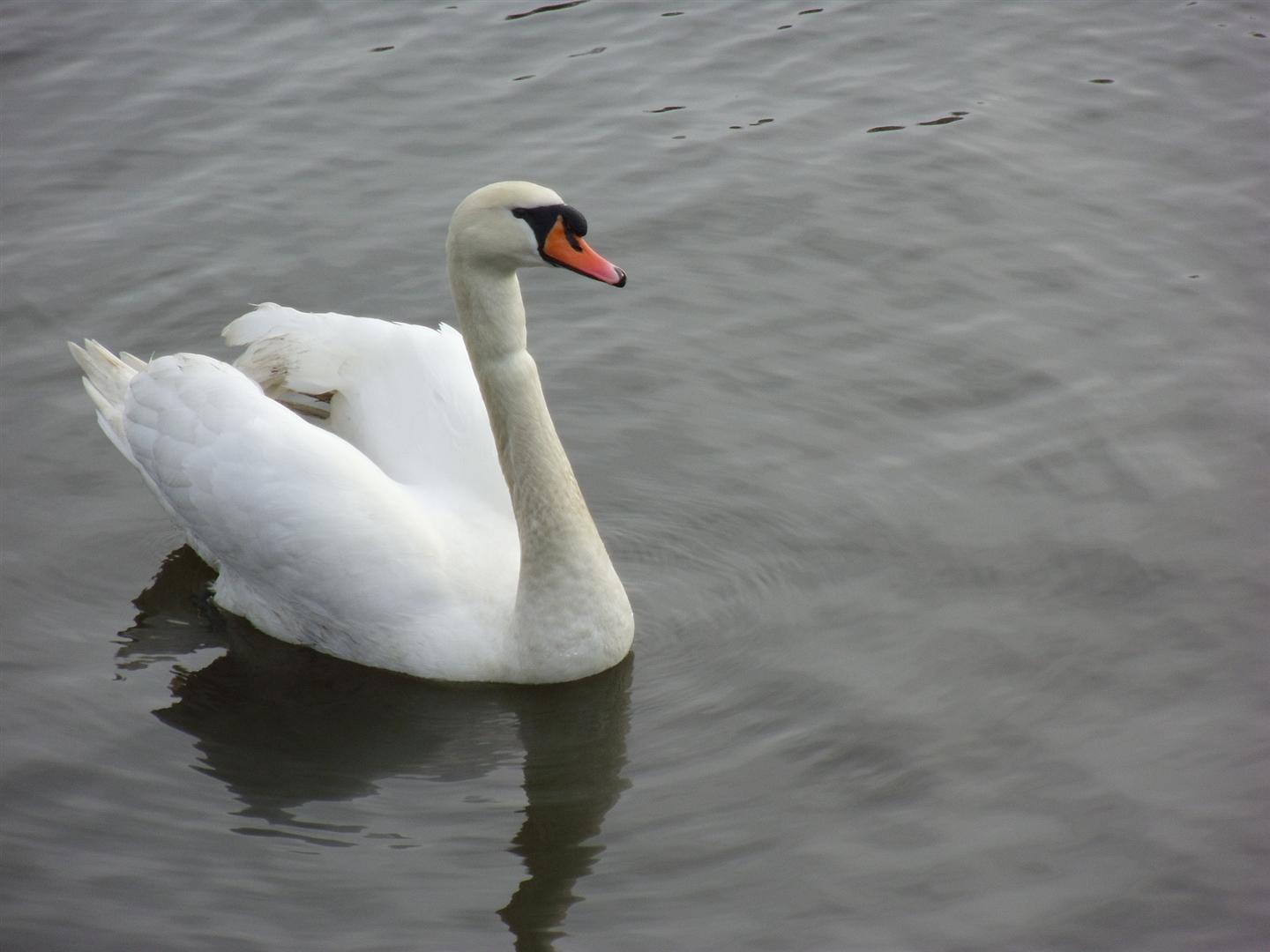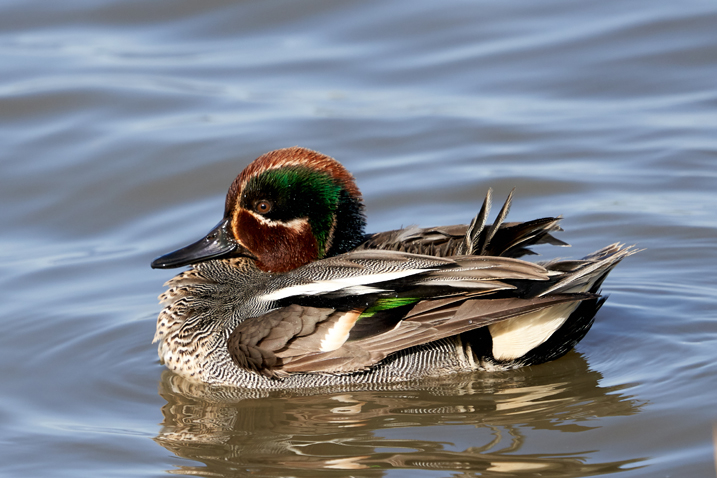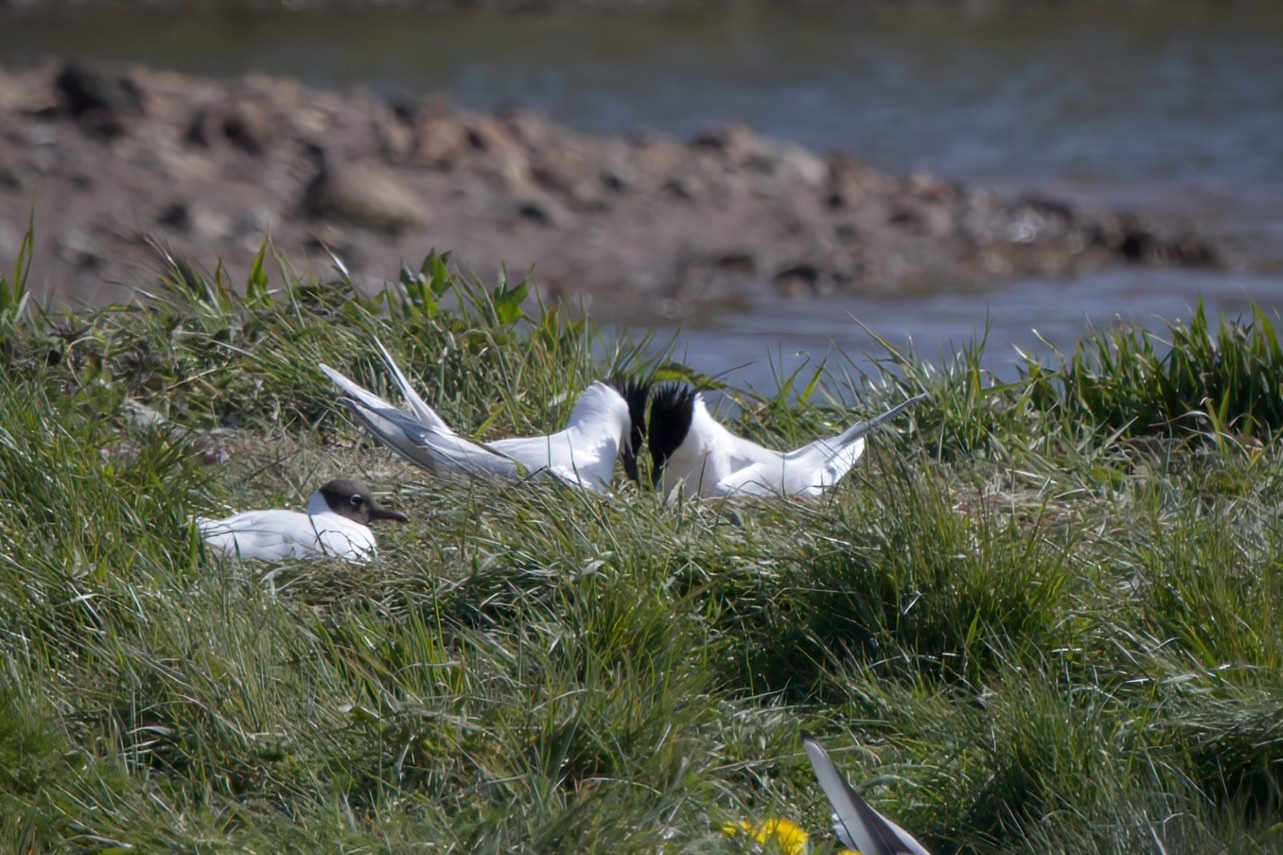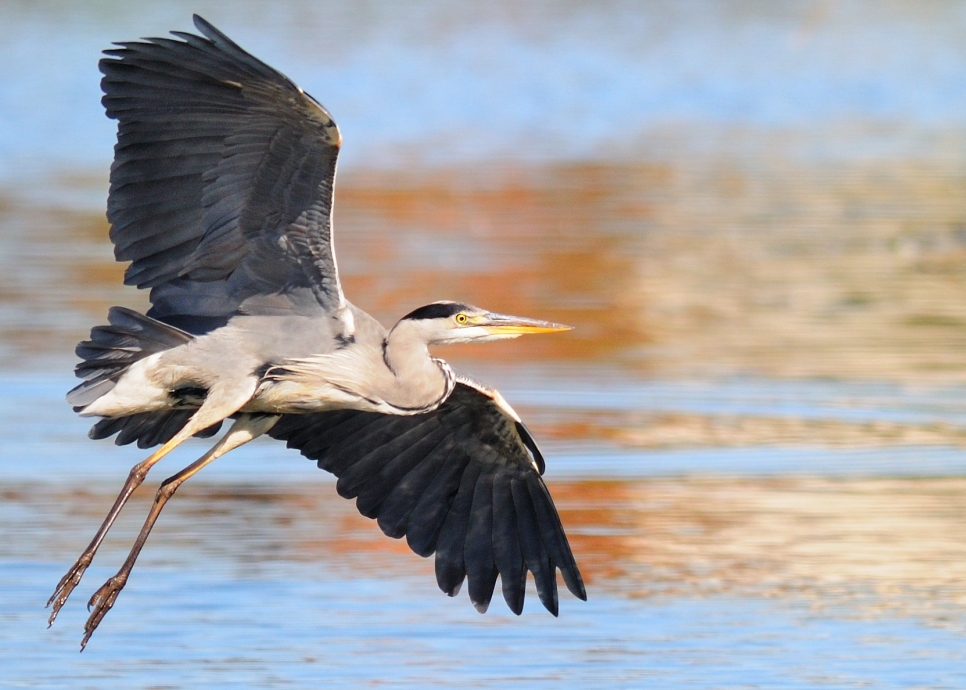What wildlife to see in wetlands in winter
While the weather might feel cold and dark, the winter season is actually an amazing time for spotting wildlife and interesting weather in the UK - particularly in wetlands.
While the weather might feel cold and dark, the winter season is actually an amazing time for spotting wildlife and interesting weather in the UK - particularly in wetlands. Freezing conditions may not seem very appealing for getting out in nature, but research has shown that reduced contact from the natural world is often related to conditions such as depression, anxiety and obesity.
It’s becoming more apparent that our seasons are changing - and these changes are influencing the behaviour of our wildlife. That’s why it’s even more important to get outside and connect with what’s going on around us. Here are our top ten winter sights to look out for.
1. Starling murmurations
The slow swoop of synchronised shapes across the winter sky has a mesmeric quality that you won’t soon forget. The way these small birds move in unison is impressive - and almost eerie, with the high-pitched sound of the flock building up in anticipation before they swoop into view.
With each bird having reflexes of under 100 milliseconds, they’re able to change direction seamlessly without crashing. You can see swarms of up to hundreds of thousands of birds form around dusk during winter days, the sunset forming a dramatic backdrop to their aerial acrobatics.
It’s generally believed that starlings form these murmurations to confuse predators, to stay warm and simply to communicate and reaffirm social bonds. Starling murmurations are still commonplace in urban areas too, but the population has fallen by nearly 80% in recent years.
Where: WWT Arundel (West Sussex), Slimbridge (Gloucs)
When: October to April
Time: Dusk
2. Early blooms
You may have already noticed in your own garden that the first tips of early spring blooms are appearing. One of the earliest, the snowdrop, can bloom in January and recently as early as December, possibly due to our warming climate. Although this might be a worrisome thing to notice, it’s undeniable that the snowdrop is a welcome sight of spring in the not-too-distant future.
Did you know that snowdrops may not actually be a UK native species? They were only recorded as growing wild here after the late 18th century. In folklore, they symbolise hope and purity, but to take just one was thought to bring bad luck.
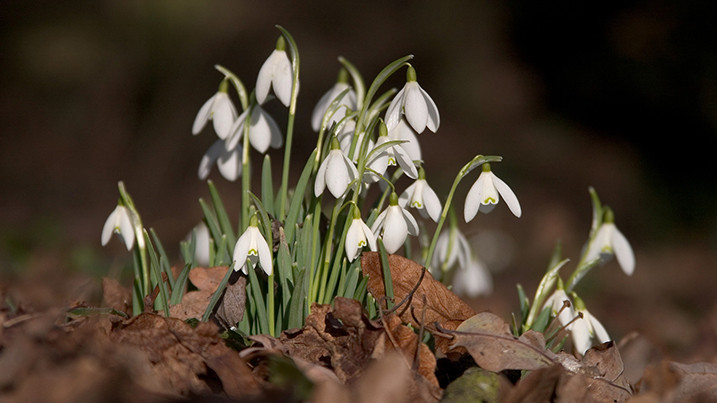
Where: Widespread across the UK
When: January
3. Bonding swans
Is there trouble on swan lake? Necks arched and wings beating, two Bewick’s rear up from the water in an apparent altercation, their high bugling calls cutting through the air. But this is not a bust-up: the birds are a pair, and their display signals the renewal of courtship – a process that will soon see them depart to begin their annual 2,000-mile spring odyssey back to their breeding grounds in Russia.
Like all Bewick’s swans, their unique bill markings confirm their individual identities. The markings have continued to inform one of the longest ongoing research programmes of any bird species in the world. Bewick’s swans pair for life; some couples have returned for more than 20 years. It’s heartwarming to see such a bond in a cold and lonely season.
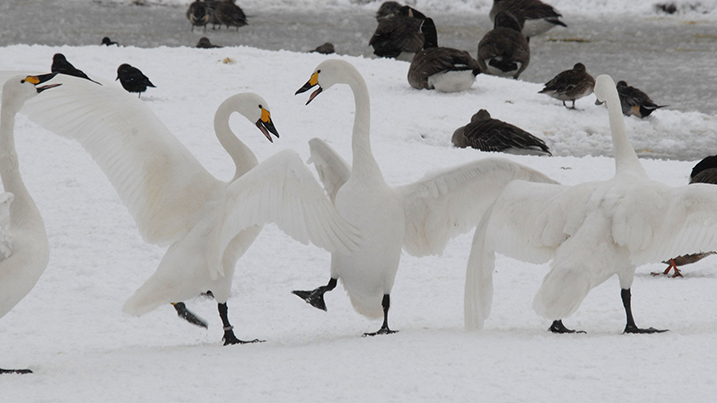
Where: WWT Slimbridge and Welney
When: October to March
4. Ice is nice
If the icy, wintry weather is getting you down, one look at this playful stoat thoroughly excited by a frozen-over pond might convince you otherwise.
Stoats are known for being turn-coats; in winter, their brown fur is often replaced by a whiter, brighter covering, with only the black tip of its tail left to match its face and ears. This was filmed at WWT Slimbridge in the south of England, which may explain why it’s seemingly shunned its winter wardrobe - stoats living in areas with higher average temperatures and less snowfall are less likely to go ‘ermine’ as it’s called. In these areas, stoats that don’t turn ermine would actually be camouflaged more effectively, so would stand a better chance of finding - and not being - a meal.
This ‘dancing’ behaviour is also known as the ‘weasel war dance’ and it’s considered that weasels and stoats use this tactic to confuse their prey. In domestic animals, the behaviour often occurs during play.
Where: Look near tangles of vegetation, where prey might be hiding
When: Stoats are easier to see in the winter months. Be very quiet and patient!
5. Winter water rail
On a crisp winter morning, a movement in the reeds: on cue, the water rail emerges from below. It resembles a skinny, upright moorhen, but the low winter light reveals striking blue-grey underparts, a chestnut back and red dagger bill.
This secretive reedbed denizen occurs on many WWT reserves, its presence most often betrayed by its pig-like squealing calls.
During winter cold snaps, when visitors from Eastern Europe swell the native population, it shows a more public face, emerging from the reedbeds in search of open pools. Watch quietly or it will dash away, white undertail flicking in panic, to resume its skulking.
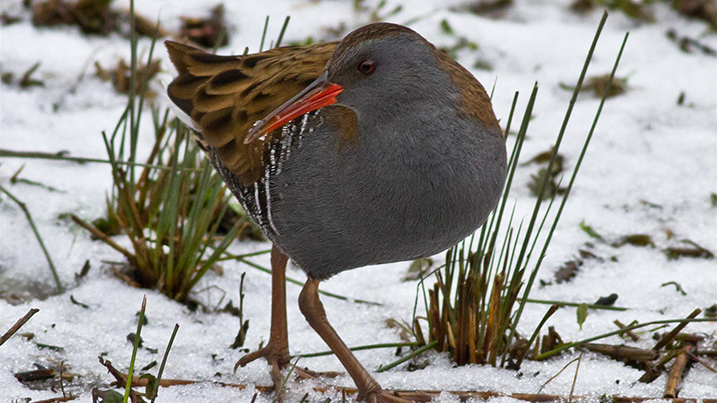
Where: Arundel; also Steart, London, Slimbridge and Caerlaverock
When: November to February at Caerlaverock, October to March at Arundel
Time: All day, easier to see in cold weather
6. Hoarfrost morning
When a blast of cold weather hits, there’s sometimes a very beautiful consequence that might make up for the sudden inhospitable conditions.
Hoarfrost forms in much the same way as dew, but when water vapour encounters objects that are already below zero degrees celsius, it produces feathery ice crystal structures that give it its name. It’s an iconic symbol of a wintry landscape.
The word ‘hoar’ come from the Old English word ‘har’ meaning grey or old and refers to these tendrils of ice which resemble an old man’s beard.
Hoarfrost is not to be confused with ‘rime’ which occurs when fog freezes in a continuous thick glaze rather than frozen ice crystals.
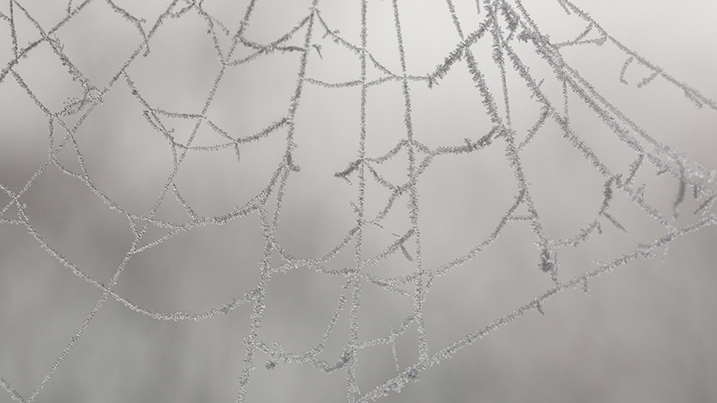
Where: Anywhere, but it’s particularly nice in nature with lots of different surfaces to form pretty patterns
When: During extremely cold, moist weather
Time: At sunrise is the most spectacular
7. Owls on the prowl
The light is already fading when a short-eared owl materialises from the gloom at the back of the marsh. It quarters the ground methodically, dipping and stalling just above the grass heads and occasionally dropping from sight in pursuit of a vole.
Barn owls might also be a-wing, moth-like in their ghostly white plumage. Little owls pop up around old buildings, bullheaded and inquisitive. And the quavering hoots of tawny owls echo after darkness through the woods, where the dark branches may even hide a roosting long-eared owl, the rarest of this nocturnal quintet.

Where: Llanelli; also Caerlaverock, plus Welney for barn owls and Steart for short-eared and barn owls, and Washington for tawny owls
When: Winter
Time: Look for short-eared owls hunting during the day
8. Try to spot a bittern
The elusive bittern is hard to spot, but once you do it’s unmistakable. Its long legs are those of a heron, yet there’s something almost owl-like about its cryptic camouflage plumage. Its neck is also an oddity: one minute squat and nearly invisible, the next elongated. Normally found skulking in the reedbeds, when the weather is cold and daylight hours short, they venture out into the open to feed.
Bittern numbers are highest during a cold snap, when individuals arrive from the big freeze in continental Europe to make the most of our milder conditions. The buzz you get when you do spot one is guaranteed to put you in a good mood.

Where: London; also Llanelli, Arundel and Slimbridge
When: Most visible in winter
Time: Dawn and dusk
9. Whistling wigeon
It’s hard to feel blue when you’re surrounded by a flock of whistling ducks. On frosty mornings, a chorus of excited whistles are the unmistakable calling card of the wigeon. The males are decked out in their handsome livery of pink breast, chestnut head and creamy crown, the females a camouflage brown. Numbers of this gregarious duck usually start building up from late autumn. When 3,000 take to the air at once, the whistling is impressive.

Where: All WWT centres have some wigeon active
When: Winter
Time: All day
10. Marvel at the pink-footed sunset
You’ve struck lucky: it’s a perfect winter sunset. The birds arrive silhouetted against a vivid backdrop of pinks and golds as they straggle across the sky, skein after skein commuting back from the fields to their roost at WWT Martin Mere Wetland Centre. The numbers are impressive – some 5,000 of the birds remain throughout the winter here.
For these travellers, the food-rich wetlands offer a vital pit stop; a chance to rest and refuel after their 500-mile flight from Iceland before continuing to wintering grounds further south. Now, as the early darkness of January falls on the reserve, you watch those that remain hunkering down on the water among their fellow Icelandic voyagers, the whooper swans.

Where: Martin Mere and Caerlaverock
When: September to April
Time: Dawn and dusk
From spectacles of numbers to rare sightings and incredible behaviour, there’s no better place to watch and enjoy it than at one of our sites.
